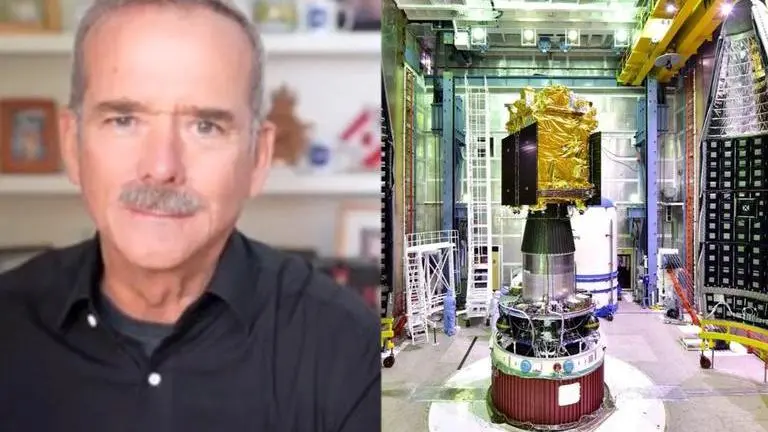Updated 2 September 2023 at 08:40 IST
Former ISS commander Chris Hadfield hails India's Aditya-L1 solar mission
Former ISS commander Chris Hadfield praises India's technological prowess and highlights the global significance of the Aditya-L1 mission, set to study the Sun.
- Science News
- 3 min read

As India's countdown for its maiden solar mission, Aditya-L1, to the Sun, begins, former International Space Station (ISS) commander, Chris Hadfield, has lauded India's "technological prowess." In an interview with ANI, Hadfield expressed his admiration for India's space achievements and highlighted the global significance of the Aditya L-1 mission.
Scheduled for launch on Saturday at 11:50 IST from Sriharikota, the Aditya-L1 is India's first solar space observatory, set to be carried into space by the PSLV-C57. The mission aims to study the sun in detail, featuring seven different payloads, four of which will observe sunlight, while the remaining three will measure plasma and magnetic fields in situ.
Hadfield emphasised the far-reaching impact of Aditya L-1, stating, “So when we put something like Aditya L-1 up there in between us and the Sun to sense those things, to better understand how the sun works and the threats that it poses to the Earth, it's beneficial for everybody in protecting us as people. But also, of course, our electrical grid, our internet grid, and all of the thousands of satellites that we rely on that are up in orbit,” he said.
Aditya-L1 will orbit around Lagrangian Point 1 (L1), situated 1.5 million km from Earth in the direction of the sun, reaching its destination in approximately four months. Hadfield underscored the critical role of technology in our daily lives, from electricity to communication, making space weather data from Aditya-L1 invaluable for the world.
Advertisement
India's solar mission aims to address key objectives, including studying the physics of the solar corona and its heating mechanisms, solar wind dynamics, solar atmosphere behaviour, and more. It will utilise instruments like the VELC coronagraph to observe the sun's corona, which is typically visible during total solar eclipses.
The Former Commander of ISS also commended India's recent achievements in space exploration, notably the successful landing of Chandrayaan-3 on the moon. He called it a historic moment, showcasing India's technological prowess. India's cost-effective approach to lunar exploration is a testament to its competitiveness in the global space industry. He added.
Advertisement
Regarding India's budget allocation for Chandrayaan-3, Hadfield emphasised that it represents a small fraction of the country's overall budget. He noted that the mission showcased “a strong demonstration of the increased capability of Indian technology."
Hadfield praised Prime Minister Narendra Modi's leadership in driving India's space initiatives, pushing for technology development, and facilitating privatisation to benefit Indian businesses and the people. He said, “I think Prime Minister Narendra Modi has seen that for several years. He is very much directly involved with the Indian space and research organisation... So it's a really smart move on India's leadership's part right now, to be pushing it, to be developing it, but also being in the process of privatising it so that the businesses and therefore the Indian people can benefit.”
Published By : Swapnanil Chatterjee
Published On: 2 September 2023 at 08:40 IST
